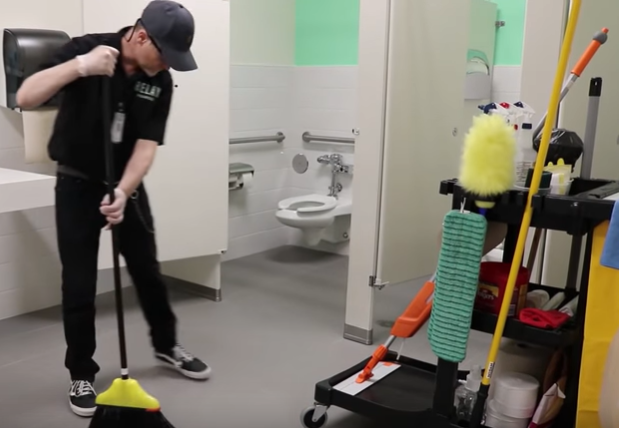
Since the coronavirus outbreak, scientists have warned that COVID-19 can be spread by fecal-oral transmission which made experts stress the importance of post-bathroom hand washing. Now experts have stated that the virus can also be spread through what is known as aerosolized feces, which means that the lids of toilet bowls should be closed while flushing.
Aerosolized feces
Because of a phenomenon known as toilet plume,or the dispersal of microscopic particles as a result of flushing a toilet, urine or stool can escape from the toilet into the air and spread disease, according to the Association for Professionals in Infection Control and Epidemiology.
Qingyan Chen, a professor of Mechanical Engineering at Purdue University, stated that there is one way to help prevent the spread of coronavirus, and that is to close the lid of the toilet bowl and then flush. About 80% of particles that escape from fecal matter into the air can be prevented by closing the lid when flushing.
In order to avoid getting COVID-19 when using a public bathroom, it is important that you wash your hands, then flush the toilet using a paper towel or gloves and avoid touching the handle. This can help minimize the contamination period, and Chen suggests to wait one to two minutes to use a public bathroom after someone has finished.
The danger of fecal-oral transmission is so much higher for symptomatic people, so if you share a bathroom with a coronavirus patient, it is best to disinfect the entire washroom with alcohol or ultraviolet light between uses. A study from the City University of Hong Kong found that a toilet flush can release up to 80,000 polluted droplets and leave them suspended in the air for hours if the toilet lid is left up.
Alvin Lai, the researcher of the said study said that covering the toilet lid while flushing is definitely vital, but it should not be considered as the only prevention to help spread the virus. Lai advised households to regularly clean bathrooms with diluted bleach, use proper ventilation and close the bathroom doors when they are not in use.
COVID-19 transmission
There are four methods of COVID-19 transmission. The first one is direct or indirect contact, for example, if someone is breathing on you or sharing a drink. The second one is through droplets, which can be in cough or skin-to-skin contact. The third one is airborne, with COVID-19 passing through the air or through ventilation, and the fourth one is the oral-fecal transmission, meaning that contagions from fecal matter is inadvertently ingested.
Even though direct or indirect transmission is the most likely candidate for transmission, according to Chen, there is no concrete evidence or research to trace the origins of COVID-19 transmission on a per-patient basis.
Qingyan Chen has studied how the virus spread through transit ventilation systems and is creating a ventilation system that would prevent the spread of pathogens with people only breathing their own air, according to Purdue University.
How to disinfect
When disinfecting, use a mildly alkaline all-purpose detergent. The cleaning for sanitary facilities can be enhanced by using a disinfectant. It is important to wear gloves to protect the hands when cleaning surfaces.
After cleaning, the gloves must be carefully washed and dried or they should be replaced with a new pair. And after cleaning, disinfect the equipment that was used to clean at the end of the process. Wash your hands and forearms with soap and water when the gloves are taken off.
Related Articles: Should You Disinfect Your Groceries? Experts Warn Against Dangers of Washing Produce
© 2026 HNGN, All rights reserved. Do not reproduce without permission.








